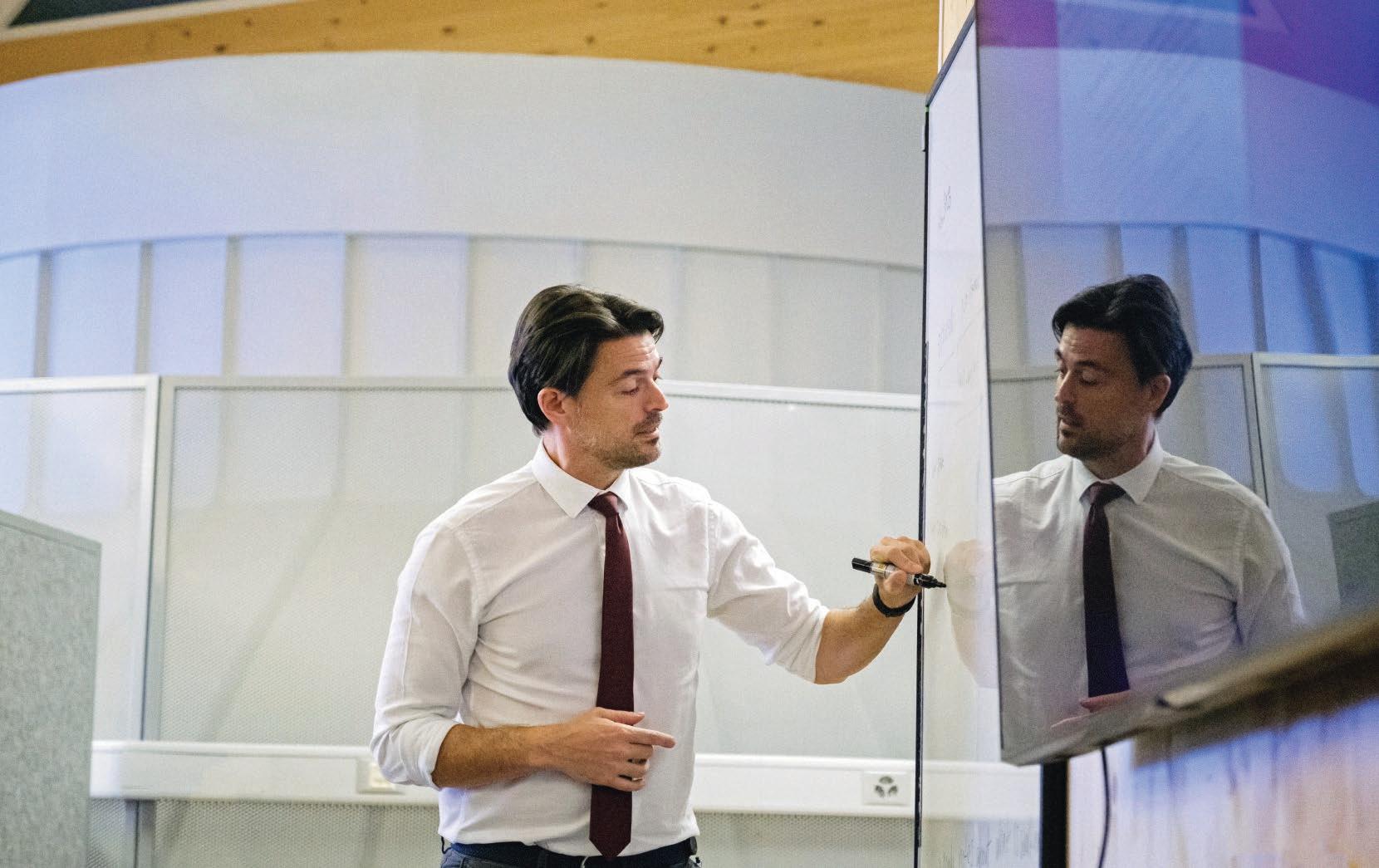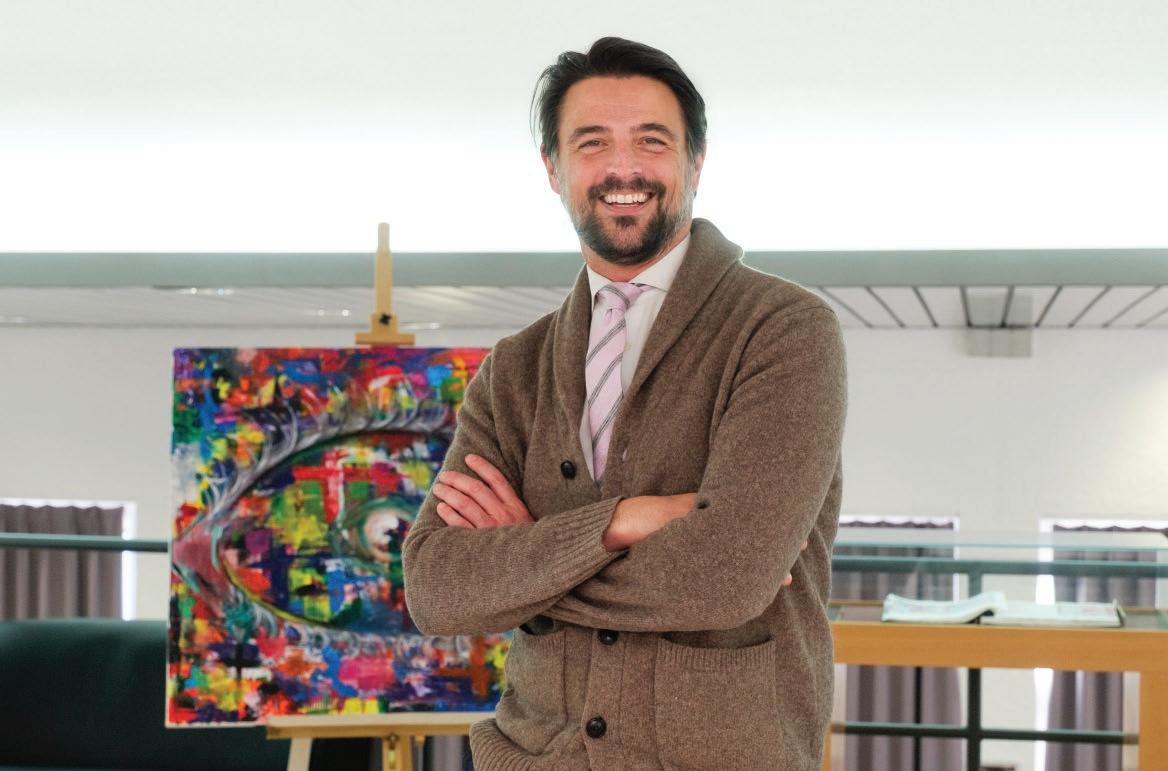
2 minute read
MAGIC MOUNTAIN MAGNETISM
By John Gidding ’95, Design and Entrepreneurship Teacher

The Magic Mountain must be magnetic—once you’ve resided within its gravity field and felt its presence, you will feel its absence wherever else you go. Perhaps it has to do with the tectonic history of the Alps, the dramatic peaks which tell their story of sudden subduction, the collapse of long-lost ocean floors, and the rapid welding of entire continents along a jagged seam only 100 kilometers at its widest. Geologists, unwrapping millions of years of history by measuring the direction of magnetic minerals frozen in place when lava fields cooled into rock, can confirm my theory of Magic Mountain magnetism—but perhaps they haven’t yet focused on the little town of Leysin, which seems the epicenter of its own gravity field; all who enter, even once, find their way back. Surely there’s a body of research waiting for analysis on this curious Leysenoud effect?
My first time on the mountain remains an indelible “peak” experience (pun intended). I still remember arriving alone as a fifteen-year-old to Geneva’s gray airport, being whisked away by the LAS welcome crew on a bus driving up the ever-windier roads, and arriving at a postcard-perfect village called Leysin. The high altitude and southerly attitude meant that, for the first time in my life, I could see the sun from dawn to dusk without a single object getting in its way—no buildings tall enough, no urban canyons, no city blocks...not even the clouds could cover me, the fluffy tops of which I would gaze down upon from my new perch. Was this real life, or was this just fantasy?

Academically, I was initially an average student. I arrived with poor study habits and a procrastination problem. It took a few years, but by the time I graduated the gears of my academic machinery were so finely tuned that I matriculated at Yale for one degree and Harvard for the next, entering the field of architecture soon after.
The connections I made at LAS have remained a source of support and my lifelong companions, yielding exciting career opportunities and travel experiences. I built a design practice that produced projects all over the world thanks in large part to having maintained a global community, just like they taught me at my high school in a little village on a mountaintop.
Recently, something funny happened. I felt a strange gravity. Or rather, I noticed its absence. It had been almost 30 years since I’d felt the draw, but that magical suture zone between tectonic plates was calling me back. A quick deployment of feelers to my LAS alumni network yielded rapid results—someone had heard that LAS was looking for a design teacher. Three emails and four interviews later, I found myself back in Geneva, the airport now slightly less gray, recently renovated.
Today, teach 10th, 11th, and 12th grade Design and Entrepreneurship at LAS. A lifetime of applying principles of design and building businesses is helping me take on my most rewarding challenge yet: supporting the next generation of innovators, creatives, and entrepreneurs whose brilliance and hard work we will depend on as we build the connected, global, and sustainable society of tomorrow.
Fellow alumni visiting the school: please stop into my classroom where you’ll find students researching emerging technologies, building investment strategies and foundations of personal financial responsibility, designing fashion collections alongside business concepts, and using technical drawings and storytelling techniques to express their ideas for the future. It’s still early days as LAS embarks on an exciting new chapter, investing broadly in the areas of Innovation, Creativity, and Entrepreneurship (ICE), but from where I’m standing, there’s sun above the snowy peaks as LAS students work and play, and the future looks bright.










